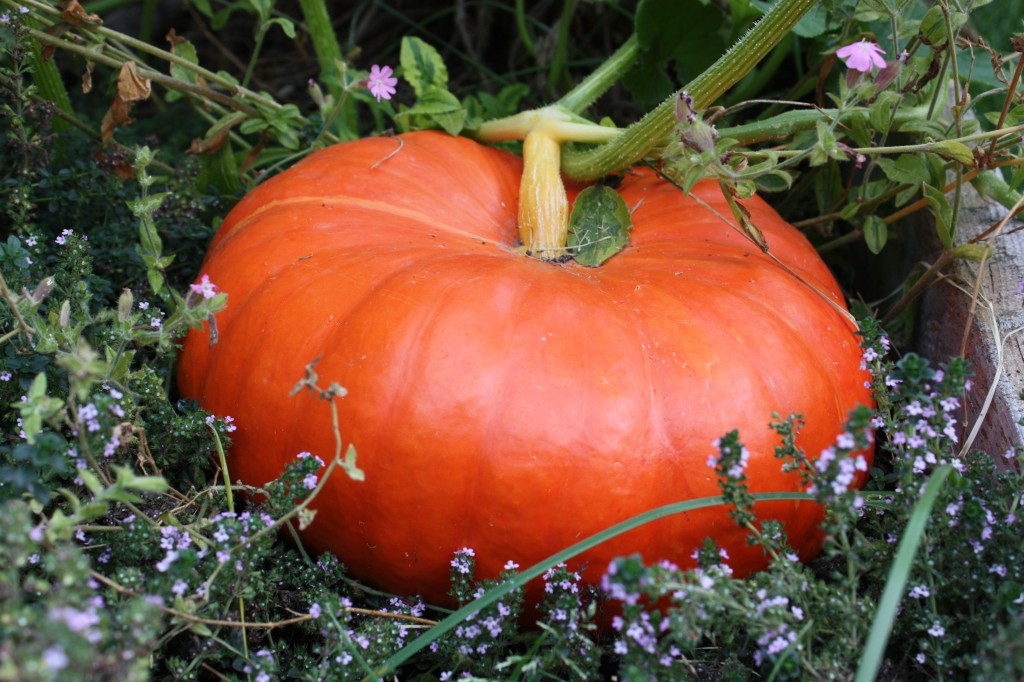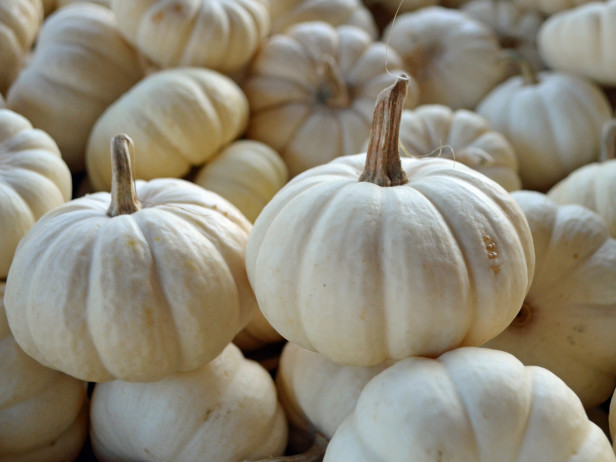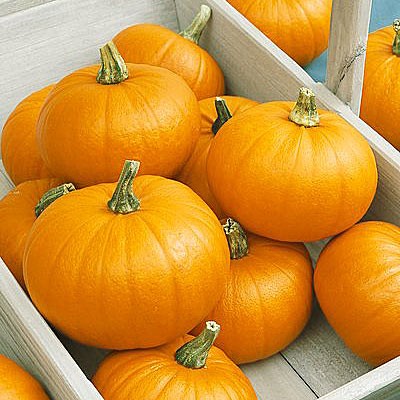(image)
I recently attended the Utah State Fair, where I posed for pictures with a six hundred pound pumpkin (I also posed with several goats and some blue ribbon dahlias, as one does). Unfortunately, growing a 600 pound pumpkin on my terrace would violate the terms of my lease. Probably yours too. Fortunately, there are a number of smaller pumpkins I’d be just as happy to be associated with.There are three particular varieties that will be vying for a place in my winter seed order.
Rouge Vif d’Etampes. That’s the beauty in the photo above. The fancy french name is appealing, and the flesh is perfectly edible, but the real reason to grow this type of pumpkin is for its fairy tale good looks. The scarlet orange just sings. When I walk around and see Rouge Vif d’Etampes pumpkins decorating the steps of brownstones this time of year, I explode with covetousness.
(image)
Baby Boo. These ghostly little darlings would not be for eating, just for decor, but I find them irresistible nonetheless. I was just at an amazing wedding in the Berkshires, 100% beautiful fall perfection, and the table escort cards were tied to Baby Boos. You sort of just wanted to steal them all. In addition to looking great on a table/mantle/shelf/anywhere, you know where else these pumpkins would look great? Growing in a garden. Bright green vine-y tendrils next to luminescent spots of white. Just lovely.
(image)
New England Pie Pumpkins. The word “pie” in the name is a real giveaway of my motivations here, but I also have to say if there’s a region I would like my pie pumpkin to be from, it’s the region of the pilgrims. What’s more, these sweet little pumpkins grow to be between two and five pounds, perfect for a city garden. And unlike larger jack-o-lantern pumpkins, the flesh isn’t stringy. Just nice and smooth and creamy.
Why fight it? I think I’m just going to order all of them. If you’re tempted to join me in pumpkin growing next year, here are the three big things you need to know.
- Pumpkins are a warm season vegetable. That means you need to plant the seeds fairly late, after all danger of frost has passed. So May or so if you live in a cool climate. They’ll then spend all summer growing and be ready just in time for autumn splendor.
- They need their space. Pumpkins are in the Cucurbita family, along with other vining plants like cucumbers and watermelons. And as with their cousins, the plants themselves can get large very quickly, even if you’re growing a small variety. To accommodate, you’ll want to space the seeds ten to twelve inches apart, and once you have pumpkins on the vine, you’ll want to thin them (aka remove a fledgling pumpkin or two) so each pumpkin is about two feet apart.
- Don’t panic if you don’t see pumpkins right away. The first flowers on pumpkin vines are always male, and they don’t produce fruit. Their job is just to attract bees, who will then hang around and pollinate the next round of flowers, which are the ones that lead to all those pretty pumpkins. So be patient.


